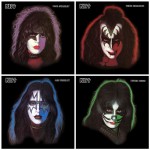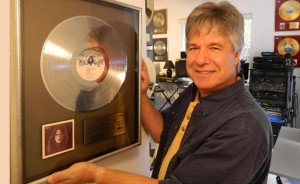Tim McPhate | KissFAQ
 Fans of Ace Frehley’s 1978 solo album are in for a treat with today’s Back In The Solo Album Groove interview with engineer Rob Freeman. Rob has gone into extensive detail about his experience working on the album. There’s lots of insight about working with Ace, Eddie Kramer and Anton Fig, lots of technical details and tidbits about songs such as “New York Groove” and “Speedin’ Back To My Baby,” a fun story or two, and a couple of never-before-seen photos. If you love Ace’s solo album, you won’t want to miss it…
Fans of Ace Frehley’s 1978 solo album are in for a treat with today’s Back In The Solo Album Groove interview with engineer Rob Freeman. Rob has gone into extensive detail about his experience working on the album. There’s lots of insight about working with Ace, Eddie Kramer and Anton Fig, lots of technical details and tidbits about songs such as “New York Groove” and “Speedin’ Back To My Baby,” a fun story or two, and a couple of never-before-seen photos. If you love Ace’s solo album, you won’t want to miss it…
Award-winning engineer details everything you want and need to know about Ace Frehley’s solo album, including the sessions at Plaza Sound, capturing Frehley’s guitar
 sounds and vocals, recording the hit single “New York Groove” and the nuances behind tracks such as “Fractured Mirror,” working alongside the legendary Eddie Kramer, and more
sounds and vocals, recording the hit single “New York Groove” and the nuances behind tracks such as “Fractured Mirror,” working alongside the legendary Eddie Kramer, and more
KissFAQ: Rob, what do you recall about getting the invitation to participate as the recording engineer on Ace Frehley’s 1978 solo album?
Rob Freeman: I got the call to work on Ace’s solo album sometime in June 1978. I’m not sure if it came directly from Eddie Kramer, with whom I had previously worked, or from someone in the KISS organization. Either way, I was thrilled to get that call because I had a sense that recording that album was going to be a big step forward both for me and for Plaza Sound, the studio I had been working so hard to advance. By the summer of ’78, I had already recorded some noteworthy albums at Plaza Sound with a variety of artists — among them, The Ramones’ first album, “Ramones”; Blondie’s first two albums, “Blondie” and “Plastic Letters”; and Richard Hell and the Voidoid’s “Blank Generation” — but these were mostly “downtown” New York artists, and, at least back then, my work with them hardly garnered the kind of worldwide recognition that a KISS album would.
KF: Was this your first KISS-related project?
RF: Yes, Ace’s album was the first. I guess the other KISS band members and the rest of their organization liked what I did for Ace because after that they called me to work on the “Music from the Elder” and “Lick It Up” albums as well as to put a number of radio and television commercial spots together for them. I also designed and installed a home recording system in Paul Stanley’s uptown NYC condo.
KF: You said you had worked with Eddie Kramer prior to Ace’s solo album. What projects did you do with him?
RF: I first worked with Eddie on some tracks by a great Brooklyn band called The Laughing Dogs. I think that was sometime in late ’77 or early ’78. Unfortunately, those recordings were never released, even though we put a lot of effort into them. After that, Eddie and I worked together on a singer-songwriter’s project. Then sometime after doing Ace’s solo album, I worked with Eddie again on some early Twisted Sister tracks.
KF: Having worked in the trenches along side him, what do you think are the strengths that Eddie Kramer brings to a project?
RF: Eddie is a studio renaissance man. He could produce wonderful records, engineer innovative and exciting sounds, and even perform musically. He was comfortable on either side of the control room glass and, while cutting tracks, would often spend time out in the studio with his artists, leaving me to man the recording console on my own. I loved hearing this somewhat edgy veteran of rock ‘n’ roll sit down at a piano and begin tapping out sensitive, classical melodies. He played just beautifully. Eddie drove his sessions with a hard-nosed sense of purpose, but he was never too self-absorbed to not listen to someone else’s suggestions or to handle a note of worthy criticism. When I first started working with him, I was well aware of his legendary career (The Beatles, Lead Zeppelin, Jimi Hendrix… I mean, come on!!) so I considered myself very fortunate to be sitting next to someone with his level of experience and success. I kept my eyes and ears open and learned a lot from him.
Socializing with Eddie outside the studio I discovered him to be a very gracious host. He had a terrific sense of humor and could be hysterically funny. So between Eddie’s joking around and Ace’s twisted, relentless humor, there were always sources of comic relief if things ever started to get tense in the studio.
KF: The album was recorded at the Colgate Mansion in Connecticut and Plaza Sound in New York. Were you present for all of the recording sessions?
Entire Rob Freeman interview:
http://www.kissfaq.com/78/interview_rob_freeman.php
